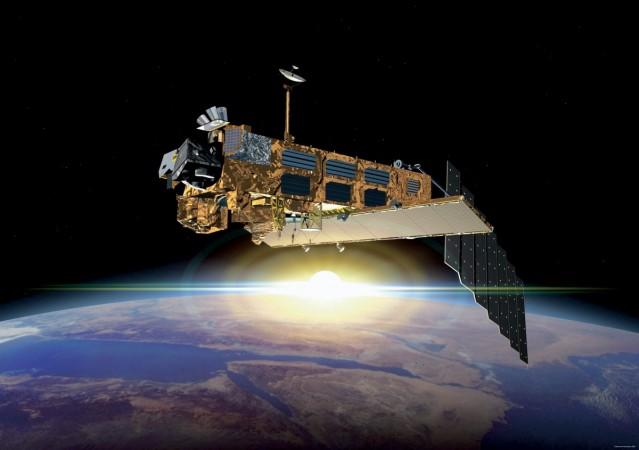
Airbus has built a harpoon they claim will be a great way to clear space of debris. The idea is to capture objects floating about in space by skewering them using the sharp end of a specially built harpoon and dragging it back into Earth, burning it on reentry.
This harpoon will be about a meter long and will be tethered to a spacecraft with a high tensile cable. The spacecraft will fly the harpoon into large debris like satellites and other such objects and fire it off into Earth. As the harpoon, with all the junk, reaches the upper atmosphere, the junk will be permanently lost, getting completely burned.
According to a report by Popular Mechanics (PM), researchers are now currently testing the harpoon against 3 cm thick aluminum composite honeycomb panels, using compressed air.
"The harpoon goes through these panels like a hot knife through butter," advanced project engineer Alastair Wayman told the BBC. "Once the tip is inside, it has a set of barbs that open up and stop the harpoon from coming back out. We'd then de-tumble the satellite with a tether on the other end."
"Many of these targets will be tumbling and if you were to use a robotic arm, say, that involves a lot of quite complex motions to follow your target," Wayman said. "Whereas, with the harpoon, all you have to do is sit a distance away, wait for the target to rotate underneath you, and at the right moment fire your harpoon. And because it's a really quick event, it takes out a lot of the complexity."
One of the main targets of this harpoon system, say its developers, is the Envisat Earth observation satellite- an eight-ton hunk of metal and sensors that went defunct and it still in orbit for over six years now.
"If we can design a harpoon that can cope with Envisat, then it should be able to cope with all other types of spacecraft including the many rocket upper-stages that remain in orbit," said Wayman.
There are well over 23,000 pieces of space junk right now orbiting the Earth and they can be quite dangerous to satellites and space stations. Even small debris, like flecks of paint traveling at great speeds, can cause a lot of damage.
In fact, in a recent launch, a new sensor was installed on the outside wall of the International Space Station (ISS), to study what is known as invisible junk – dust-sized particles that can severely damage objects in orbit.
US Air Force (USAF), using a ground-based radar, is also currently tracking 23,000 objects in space that are about the size of a baseball for satellite operators to avoid them.
The Airbus harpoon will soon be tested in space, notes the PM report. A miniature version will be launched into orbit next month and will attempt to capture a piece of debris that it carried up with it.
This test will be done by RemoveDebris, a group that is focused on clearing space junk. They will also reportedly test a net-based space junk clearing method in the same mission.
















